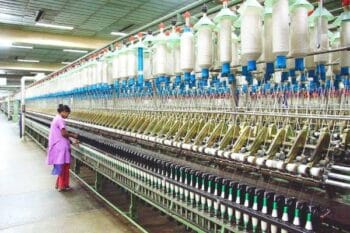 We can expects the government’s upcoming budget to continue to focus on boosting investment in the textile value chain to reach its ambitious target of triple growth of Indian textile exports to $100 billion in five years.
We can expects the government’s upcoming budget to continue to focus on boosting investment in the textile value chain to reach its ambitious target of triple growth of Indian textile exports to $100 billion in five years.
The rating agency said India is currently on the brink of a potential growth cycle in the global textile market. In addition to the US-China trade war, China Plus One’s sourcing policies are being endorsed by several major consuming regions around the world to mitigate the risk of events such as the Covid-19 pandemic, and mounting concerns over Xinjiang’s use -cotton. possibility.
As China is currently the leader in the global textile market and is likely to lose some market share in the short to medium term, India remains one of the potential beneficiaries of this shift. Nevertheless, challenges remain high in the form of competition from other cheap/more efficient peer countries, the evolving FTA landscape where some peers already have tax-free access to some of the key markets, as well as domestic issues such as infrastructure bottlenecks.
It added: “There is likely to be more emphasis on the value chain of man-made fibers (MMF), apparel and technical textiles, which offer huge growth opportunities in global trade, and where India has lagged so far. In line with its commitment to Make in India for the world, the government has adopted several policy initiatives, including the announcement of the PLI scheme, the extension of the Rebate of State and Central Taxes and Levies (RoSCTL) scheme for clothing and makeup for three years, the announcement of the Remission of Duties and Taxes on Exported Products (RoDTEP) rates for the other textile segments and notification of seven textile parks under the PM-MITRA scheme, during the past year While the policy initiatives are all steps in the right direction, effective implementation remains crucial, requiring an adequate provision in the budget.”
As the implementation period of the ATUFS will end in March 2022, the extension of the same or the announcement of a new scheme, especially for the downstream segments and/or for captive renewable energy capacities, could encourage investment and allow the companies to reduce their carbon footprint while being more cost efficient”





















